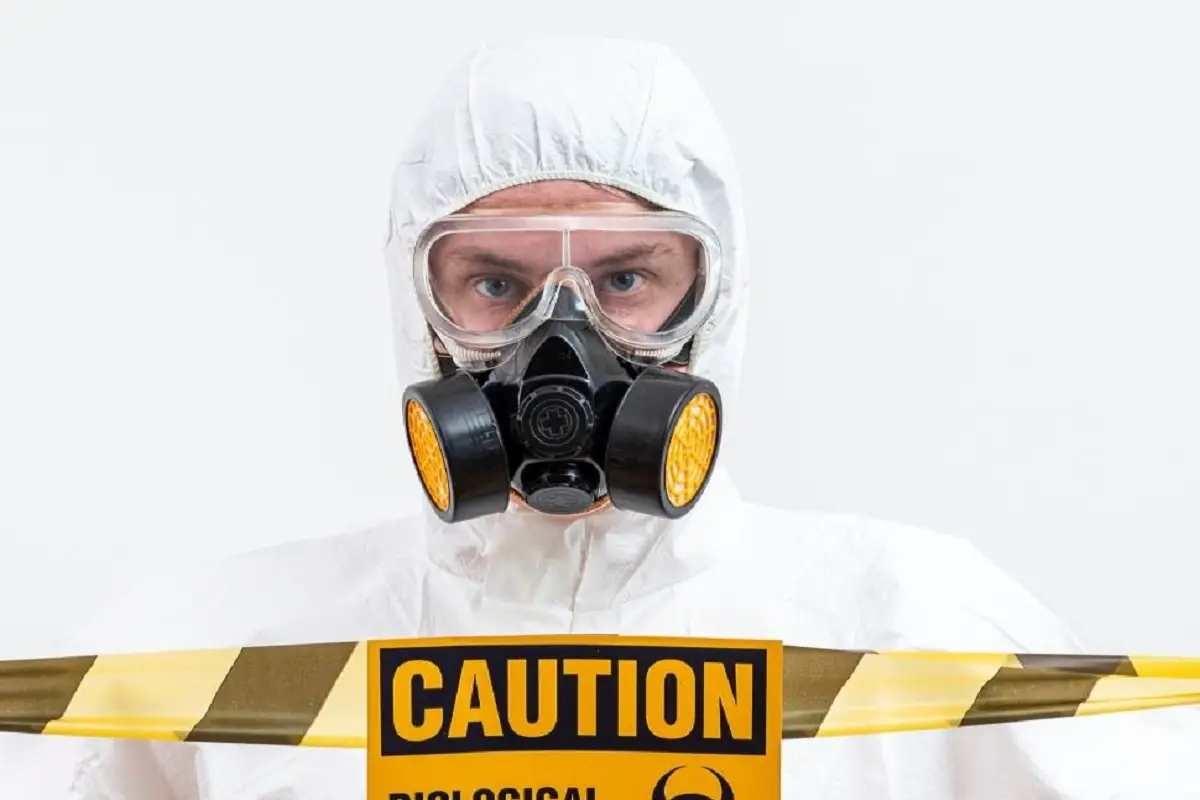Hazmat suits are one-piece full-body suits that are designed to protect the body from dangerous chemicals and biological threats. But there is more to a hazmat suit than meets the eyes. Find out more below.
Hazmat Suit Parts
To fully don a hazmat suit, additional components may need to be worn to completely cover the body. These prevent any openings in the wrists, ankles, and face areas where particles and liquids could enter. Without closing these regions off, chemicals could get inside the suit, rendering it useless. Additional components, such as an SCBA (“self-contained breathing apparatus), and cooling vest, can allow the wearer to breathe safely and stay cool in the suit.
Hazmat Suit With Respirator
A hazmat suit can also include an attached respirator. The hazmat suit will protect the wearer from harmful chemicals, and the respirator will protect them from inhalation of any hazardous fumes or particles.
Respirators can either be full or half-face covering. Half-face masks should be reusable and held on with head straps. Air respirators should meet or exceed the OSHA APF levels for the intended use.
Hazmat Suit With Gas Mask
Full face gas masks can be worn with hazmat suits as well. These have clear visors included with straps that wrap around the head. The mask can include a replaceable canister filter.

Hazmat Suit With Air Supply
Hazmat suits can have an attached air supply that is worn on the waist or back and attached to the face shield, mask, or helmet. These will allow the wearer to work in vapor-filled environments, such as during large-scale indoor painting projects. Most hazmat suit air supply kits are intended for industrial or commercial use.
These are lithium battery-powered units that allow for free mobility. They purify the air with particulate filters and replaceable vapor cartridges. This does not supply stored oxygen but purifies the incoming airflow to make it safely breathable through a mask and breathing tube.
Hazmat suits can also have fixed air supplies via a long tube to a stationary filtering machine. However, these limit the mobility of the wearer and must be carried or wheeled in a cart.
For more information on what to wear with a HAZMAT suit, see our post What To Wear Under A Hazmat Suit
Hazmat Suit With Oxygen Supply
Level A or B hazmat suits will need to have an adequate air supply attached because they are fully enclosed. These suits are made for the most dangerous environments and the wearer must be cut off from any outside exposure. Hazmat suits can have a separate attached supply of oxygen in the form of air tanks on a cylinder cart.
Hazmat Suit With Helmet
Do hazmat suits include helmets? No, hazmat suits usually do not come with helmets. However, some do, and they can include air-purifying respirators and polycarbonate visors.
Ordinary construction hard hats can be worn with a hazmat suit as well. In fact, these are recommended to wear in certain environments. Make sure the helmet meets the ANSI Z89.1 standard.
Hazmat Suit With Face Shield
A fully enclosed level A hazmat suit will include a clear face shield to allow visibility and protect the eyes and face. Hazmat suits that do not include a full head enclosure can have a face shield or mask added to the ensemble. This is highly recommended if sprays or gases will be encountered while working.
Face shields are usually made of clear polycarbonate and may also include flame-resistant polyester. The best face shields allow for good forward and peripheral vision. Make sure the visor you purchase is anti-fog and meets the ANSI Z87.1 standard for eye protection.
Looking for a new HAZMAT suit? Read our our Hazmat Suits Buying Guide for tips on buying your next one.
Hazmat Suit Gloves
It is important for the gloves to wrap around the top of the wrist and be taped to prevent any chemicals from getting into the suit. This may require the assistance of another person to don properly.
Heavy-duty, chemical-resistant, latex, PVC-coated work gloves are recommended to be worn with hazmat suits in especially risky environments. In less dangerous situations, the worker can wear nitrile disposable gloves.
Hazmat Suit Boots
The feet must be protected from exposure to chemical hazards and possible sharp objects on or near the floor. Inexpensive level D and C hazmat suits often include boot or shoe covers. However, these may not be enough in more dangerous situations. For these, industrial-strength PVC boots with steel safety toes are recommended to be worn.
Hazmat Suit With Radio
An optional radio communication device can be worn with a hazmat suit. These are very useful in extremely dangerous, poorly lit environments where team members need to keep in contact with one another to pinpoint their locations and coordinate activities. These are usually mask-mounted and worn with level A or specialty hazmat suits.
Hazmat Suit With Cooling Vest
A big issue with hazmat suits is how hot they can get while wearing them for lengthy periods of time. Fortunately, cooling vests can be purchased to wear underneath a hazmat suit. These can greatly enhance the comfort of the wearer and make their tasks easier to accomplish throughout their shift.
UP NEXT: HAZMAT Suit Colors Explained
To Close
Hazmat suits can be worn with a variety of components, with each made to protect the wearer from a range of environmental dangers. However, this post does not cover all that can be worn with a hazmat suit.

